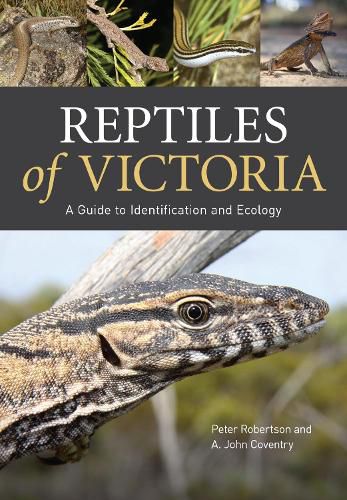Readings Newsletter
Become a Readings Member to make your shopping experience even easier.
Sign in or sign up for free!
You’re not far away from qualifying for FREE standard shipping within Australia
You’ve qualified for FREE standard shipping within Australia
The cart is loading…






Victoria's reptiles are not often encountered by urban dwellers, with many species now threatened. You may have glimpsed a skink darting into the undergrowth, a snake slithering along a walking path or a blue-tongued lizard sunning itself near your garden shed. Yet the turtles, skinks, geckos, goannas, snakes and other reptiles that call Victoria home are fascinating and important members of urban and rural ecosystems.
Reptiles of Victoria is the first regional guide to all reptiles known to occur in Victoria. It contains keys and illustrated descriptions to allow identification of the 123 native, introduced and vagrant reptile species and describes their biology, ecology, distributions and the habitats in which they live. It also indicates the level of risk that the venomous snakes pose to humans and includes a brief section on first aid for snake bites. Natural history enthusiasts and professional and amateur herpetologists will find this an essential guide.
Recipient, 2019 Whitley Awards Certificate of Commendation: Natural History
$9.00 standard shipping within Australia
FREE standard shipping within Australia for orders over $100.00
Express & International shipping calculated at checkout
Victoria's reptiles are not often encountered by urban dwellers, with many species now threatened. You may have glimpsed a skink darting into the undergrowth, a snake slithering along a walking path or a blue-tongued lizard sunning itself near your garden shed. Yet the turtles, skinks, geckos, goannas, snakes and other reptiles that call Victoria home are fascinating and important members of urban and rural ecosystems.
Reptiles of Victoria is the first regional guide to all reptiles known to occur in Victoria. It contains keys and illustrated descriptions to allow identification of the 123 native, introduced and vagrant reptile species and describes their biology, ecology, distributions and the habitats in which they live. It also indicates the level of risk that the venomous snakes pose to humans and includes a brief section on first aid for snake bites. Natural history enthusiasts and professional and amateur herpetologists will find this an essential guide.
Recipient, 2019 Whitley Awards Certificate of Commendation: Natural History